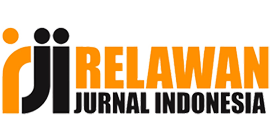THE ROLE OF “SRIKANDI” IN INCREASING WOMEN'S PARTICIPATION IN THE MINING INDUSTRY: A CASE STUDY OF PT. BUKIT ASAM TBK
DOI:
https://doi.org/10.31539/mj90d878Keywords:
PTBA Srikandi, Gender Equality, Four Frames of Gender, ESG, Women's Leadership, Gender Mainstreaming, Inclusive Work CultureAbstract
This study analyzes the effectiveness of PT Bukit Asam's (PTBA) Srikandi Program in enhancing women's participation, leadership, and equal opportunities in the mining sector. It identifies factors influencing success and barriers to implementation, and formulates a model for sustainable gender mainstreaming aligned with Environmental, Social, and Governance (ESG) principles and the company's sustainability roadmap. This study employs a descriptive qualitative methodology, utilizing in-depth interviews, document analysis, and data triangulation via SWOT and PESTEL analyses. The analytical framework employed is based on the Four Frames of Gender concept (Ashcraft & Mumby, 2004), which includes Fix the Women, Value the Feminine, Create Equal Opportunity, and Assess & Review Work Culture This study concludes that PTBA's Srikandi Program serves a strategic function as a catalyst for transforming organizational culture towards equality and sustainability. For future relevance, this program must shift from the paradigm of "empowering women to be competitive" to "establishing an inclusive and equitable system for all genders." Integrating gender equality into ESG principles and sustainability roadmaps positions PTBA to lead among state-owned mining companies in implementing inclusive leadership and sustainable gender governance practices. PTBA Srikandi focuses on promoting gender equality through the application of the Four Frames of Gender. The initiative emphasizes the importance of Environmental, Social, and Governance (ESG) criteria, women's leadership, and gender mainstreaming to foster an inclusive work culture.
References
Arcand, M., Chagnon, J., & Lavallée, M. (2020). Gender role orientations and psychological well-being: The moderating role of flexibility and context. Journal of Mental Health Research, 12(3), 145–162. https://doi.org/10.1037/mhr0000247
Badan Pusat Statistik. (2024). Sakernas Februari 2024. BPS.
Badan Pusat Statistik. (2023). Sakernas Agustus 2023. BPS.
Bertrand, M. (2017). The Glass Ceiling. Becker Friedman Institute for Economics Working Paper Series. https://doi.org/10.2139/ssrn.3191467.
Bowen, G. A. (2009). Document analysis as a qualitative research method. Qualitative Research Journal, 9(2), 27–40. https://doi.org/10.3316/QRJ0902027
Cohen, R., Fiske, S. T., & Morrison, K. R. (2021). The persistence of gender stereotypes in media and education: Implications for equality and inclusion. Social Issues and Policy Review, 15(1), 125–153. https://doi.org/10.1111/sipr.12069
Cotter, D., Hermsen, J., Ovadia, S., & Vanneman, R. (2001). The Glass Ceiling Effect. Social Forces, 80, 655 - 681. https://doi.org/10.1353/sof.2001.0091.
Creswell, J. W., & Poth, C. N. (2018). Qualitative inquiry and research design: Choosing among five approaches (4th ed.). Thousand Oaks, CA: Sage Publications.
Denzin, N. K., & Lincoln, Y. S. (Eds.). (2018). The Sage handbook of qualitative research (5th ed.). Thousand Oaks, CA: Sage Publications.
Ely, R. J., & Meyerson, D. E. (2000). Theories of Gender in Organizations: A New Approach to Organizational Analysis and Change. Center for Gender in Organizations, 22(1), 103-151. https://doi.org/10.1016/S0191-3085(00)22004-2
Herrera, M. J., González, P., & Muñoz, C. (2024). Traditional gender attitudes, pregnancy, and mental health outcomes among women: A longitudinal analysis. Journal of Women’s Health Psychology, 43(2), 210–228. https://doi.org/10.1177/08912432231234567
Maheshwari, M., & Lenka, U. (2022). An integrated conceptual framework of the glass ceiling effect. Journal of Organizational Effectiveness: People and Performance. https://doi.org/10.1108/joepp-06-2020-0098.
Please refer to APA References Guide: https://apastyle.apa.org/style-grammar-guidelines/references Muchlis, N. (2024). Merely 10% of the workforce is employed in the mining sector; women require specific regulations. Centre for Energy and Mining Law Studies. https://pushep.or.id/hanya-10-yang-bekerja-di-sektor-pertambangan-perempuan-butuh-pengaturan-khusus/
ILO & International Institute for Sustainable Development (IISD). (2023). Women in the mine of the future: Global report. International Labour Organization. https://www.iisd.org/system/files/2023-04/women-mine-of-the-future-global-report.pdf
Kvale, S., & Brinkmann, S. (2015). InterViews: Learning the craft of qualitative research interviewing (3rd ed.). Thousand Oaks, CA: Sage Publications.
Miles, M. B., Huberman, A. M., & Saldaña, J. (2014). Qualitative data analysis: A methods sourcebook (3rd ed.). Thousand Oaks, CA: Sage Publications.
Naz, S., Ahmad, M., & Khan, N. (2021). Cross-cultural perspectives on gender roles: A comparative study of collectivist and individualist societies. International Journal of Gender Studies, 10(2), 56–70. https://doi.org/10.1080/ijgs.2021.567890
Olsson, M., & Martiny, S. E. (2018). Women’s and men’s exposure to counter-stereotypical role models: Effects on motivation and performance. Frontiers in Psychology, 9, 2264. https://doi.org/10.3389/fpsyg.2018.02264
Patton, M. Q. (2015). Qualitative research & evaluation methods (4th ed.). Thousand Oaks, CA: Sage Publications.
PT Bukit Asam Tbk. (2024). Annual report 2024. Retrieved from https://www.ptba.co.id/en/investor/annualreport
PT Bukit Asam Tbk. (2024). Tanggung jawab sosial dan lingkungan (TJSL) report 2024. Tanjung Enim, Indonesia: PT Bukit Asam Tbk. Retrieved from Sustainability Report | PTBA
Saewyc, E. M. (2017). Influence of family, peers, and media on gender role development in adolescence. Journal of Adolescent Health, 61(2), 123–129. https://doi.org/10.1016/j.jadohealth.2017.01.015
Silverman, D. (2020). Interpreting qualitative data (6th ed.). London, UK: Sage Publications.
Sudaryat, S. (2024). Policy and implementation of gender equality in mining. Cogent Social Sciences, 10(1), 2400602. https://doi.org/10.1080/23311886.2024.2400602
Spradley, J. P. (2016). Participant observation. Long Grove, IL: Waveland Press.
UN Women. (2024). Progress on the Sustainable Development Goals: The gender snapshot 2024. United Nations Entity for Gender Equality and the Empowerment of Women. https://www.unwomen.org/en/resources/gender-snapshot.
Downloads
Published
Issue
Section
License
Copyright (c) 2025 Dedy Saptaria Rosa, Andika Putra Pratama

This work is licensed under a Creative Commons Attribution-NonCommercial 4.0 International License.


